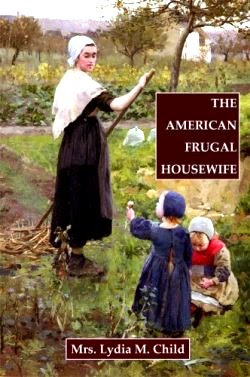Beans are a nutritious, fiber-rich, economical addition to our diets. Almost every culture in the world uses some kind of beans or legumes like peas and lentils in their cuisine. Lentils in the Middle East, peanuts in Africa, split peas in Northern Europe, red and black beans in central and South America, Navy and Great Northern Beans in America, and all of these in the melting pot of the United States. Dry beans store well and, as Grandma knew, are economical and tasty.
 You can buy many of these beans canned, can them yourself, or cook them from the dried state. I have found that if I rinse and drain any cooked or canned beans, they freeze just fine. I measure them out in recipe-size portions, like a cup or two, into plastic freezer bags and freeze them flat. They thaw quickly, ready to use. So if I have a half a jar or can left, or I want to have some cooked ahead, I simply freeze the leftovers (or planned overs).
You can buy many of these beans canned, can them yourself, or cook them from the dried state. I have found that if I rinse and drain any cooked or canned beans, they freeze just fine. I measure them out in recipe-size portions, like a cup or two, into plastic freezer bags and freeze them flat. They thaw quickly, ready to use. So if I have a half a jar or can left, or I want to have some cooked ahead, I simply freeze the leftovers (or planned overs). There are two methods for soaking beans to make them cook more quickly. Four to six hours of soaking is plenty, but they can be soaked overnight if that is convenient. Use 2 quarts of cold water for each pound of beans. If you want to soak them even quicker, cover with cold water, bring to a quick boil, simmer 2 minutes and let set, covered, 1 hour. In both cases, discard the soaking liquid if gassiness is a problem.
There are two methods for soaking beans to make them cook more quickly. Four to six hours of soaking is plenty, but they can be soaked overnight if that is convenient. Use 2 quarts of cold water for each pound of beans. If you want to soak them even quicker, cover with cold water, bring to a quick boil, simmer 2 minutes and let set, covered, 1 hour. In both cases, discard the soaking liquid if gassiness is a problem.
Remember that salt and acid (like tomatoes) make beans tough. Add them when the beans are fully cooked.
I like split peas and lentils for faster cooking – they usually don’t need any presoaking. I’ve found, as a rule of thumb, that cooking or canning my own costs about 1/3 of what purchased plain canned beans cost.
Our pictured recipes are (Top to bottom: Sausage and Black Bean Soup, Ranch Style Stew, and Barley Lentil Soup.
Here’s a handy chart for cooking your own dried beans, dried peas and lentils that I use.
Here’s a handy chart for cooking your own dried beans, dried peas and lentils that I use.
Type
|
Cooking time
|
Yield in Cups per pound
|
Black-eyed peas, cow peas, mung beans
|
Don't soak, cook 45-60 minutes
|
7
|
Black beans, Turtle beans
|
1-1 ½ hours
|
6
|
Navy beans, pea beans, haricot beans, kidney beans (red or white), Cannellini
|
1-1 ½ hours
|
7
|
Chick peas, Garbanzos,
|
1 ½-2 hours
|
6 ¼
|
Lentils
|
Don’t soak, 1-1 ½ hours
|
5
|
Lima beans
|
1-1 ¼ hour
|
6 ¼
|
Pink or Pinto beans
|
1 ¼-1 ¾ hours
|
6 ½
|
Red American beans
|
1 hour
|
6
|
Split Peas
|
Don’t soak, cook 30 minutes
|
6
|
Great Northern beans
|
1-1 ½ hours
|
6 2/3
|


















Thank you! This information on using dried beans is practical and useful. Would you consider (as a future post) elaborating on home canning beans? Also, thank you for the link to the Sausage and Black Bean Soup -- I actually have all the ingredients, so this will be dinner within the next few days!
ReplyDeleteI also want to take this moment to say that I've been really enjoying your blog. I found you ladies online about a year ago now. You have so much valuable knowledge and I am very grateful that you share it abundantly! You have been filling in gaps in my knowledge of canning, cooking, frugality and other essential housewife knowledge. Your Sunday photo postings remind me of home (I grew up on a family farm in rural western Maryland). "Thank you" seems so insufficient, but indeed I do thank you!
We will be talking about home canning beans in the next few weeks. Glad you like the blog!
DeleteThanks so much for the very kind comments. We do enjoy hearing from our readers and reminding them of Home is a special bonus.
ReplyDeleteI am going to let Sue answer the questions about the beans as she does more of that than I do. Thanks again.